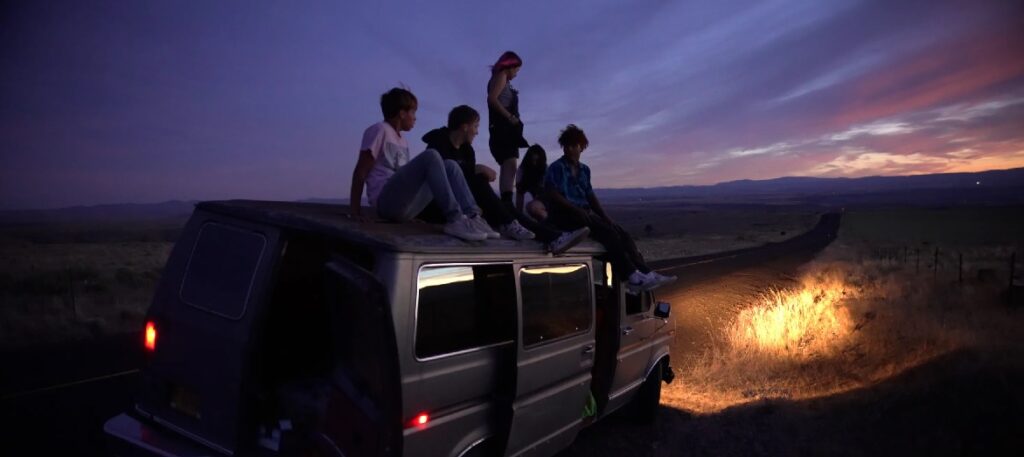
Bill and Turner Ross are back with another unconventional coming-of-age story in “Gasoline Rainbow.” This time, they follow a group of recent high school graduates on a semi-scripted journey through Oregon. While lacking the polish of traditional narratives, the film shines in its raw authenticity.
Through improvisation and non-professional actors, the Ross Brothers capture the essence of youthful exploration and the anxieties of looming adulthood. “Gasoline Rainbow” is a fascinating experiment in filmmaking, offering a refreshingly unsentimental portrait of Gen Z on the cusp of self-discovery.
Filmmaker brothers Bill Ross IV and Turner Ross see every film they make as a journey. They’re known for creating movies like “Bloody Nose, Empty Pockets” where it’s hard to tell what’s real and what’s not.
While they plan some parts, they leave space for their characters (often played by amateur actors) to discover moments naturally. This way of working is risky, but it often leads to fascinating results.
Bill and Turner love to take chances, hoping their experiments will uncover something amazing. They don’t always have a clear plan at the start, but trust they’ll find their way.
In their latest movie, Bill and Turner Ross explore a pivotal moment in the lives of many young Americans—the summer after high school. “Gasoline Rainbow” follows a group of five recent graduates as they navigate the transition into adulthood with a mix of excitement and uncertainty.
What begins as a road trip to the Oregon coast in a van filled with weed takes an unexpected turn when their tires are stolen, forcing them to embark on a 500-mile journey on foot to Portland.
Along the way, they encounter a diverse cast of characters who offer glimpses into the adventurous side of adulthood. Despite the challenges they face, the group embraces each new experience with enthusiasm, immersing themselves in the liminal space between youth and maturity, where the comforts of home are still present but their future paths remain uncertain.
They’re like typical American kids about to become adults, ready for an adventure. But is that really the case? Usually, movies about road trips are about having fun, especially for privileged kids. But these kids are different.
They carry with them worries about money and problems at home. As they travel from one place to another, they talk about their families, racism, and financial issues. It captures how people reveal themselves unintentionally in everyday conversations.
Bill and Turner got help from casting directors to choose five newcomers to play characters based on themselves: Makai, Micah, Nathaly, Nichole, and Tony. In “Gasoline Rainbow,” these characters leave their small town in Oregon in a beat-up van, heading towards the Pacific Ocean about 500 miles away.
They know their regular lives will be waiting for them when they return. This road trip is their way of holding onto their youth a little longer.
The movie shows different cultural aspects from the viewpoint of five young adults, letting us see how our culture keeps changing. It cleverly uses popular songs from different eras to show how what’s cool today might be nostalgic tomorrow.
The characters in the movie enjoy talking about music from Enya to Bruno Mars, but they also like listening to classic rock while driving. They include old songs not to make us feel nostalgic, but because the characters are discovering them for the first time.
Whether they don’t know much about Beatles songs or laughing with delight at old Cheech & Chong movies, the feelings they evoke are genuine not make believe.
The directors gave the actors enough opportunities to improvise, resulting in a natural exploration of how we grow into ourselves. The characters make jokes, enjoy being carefree, and sing along to the radio without any deep messages about Gen Z. The directors focus on keeping things relaxed and spontaneous, as they always do.
No road trip movie can truly be timeless, but some come close by embracing the era they’re made in. “Gasoline Rainbow” does this well by incorporating smartphones and social media into classic road trip themes. This makes the film relevant for both now and the future.
